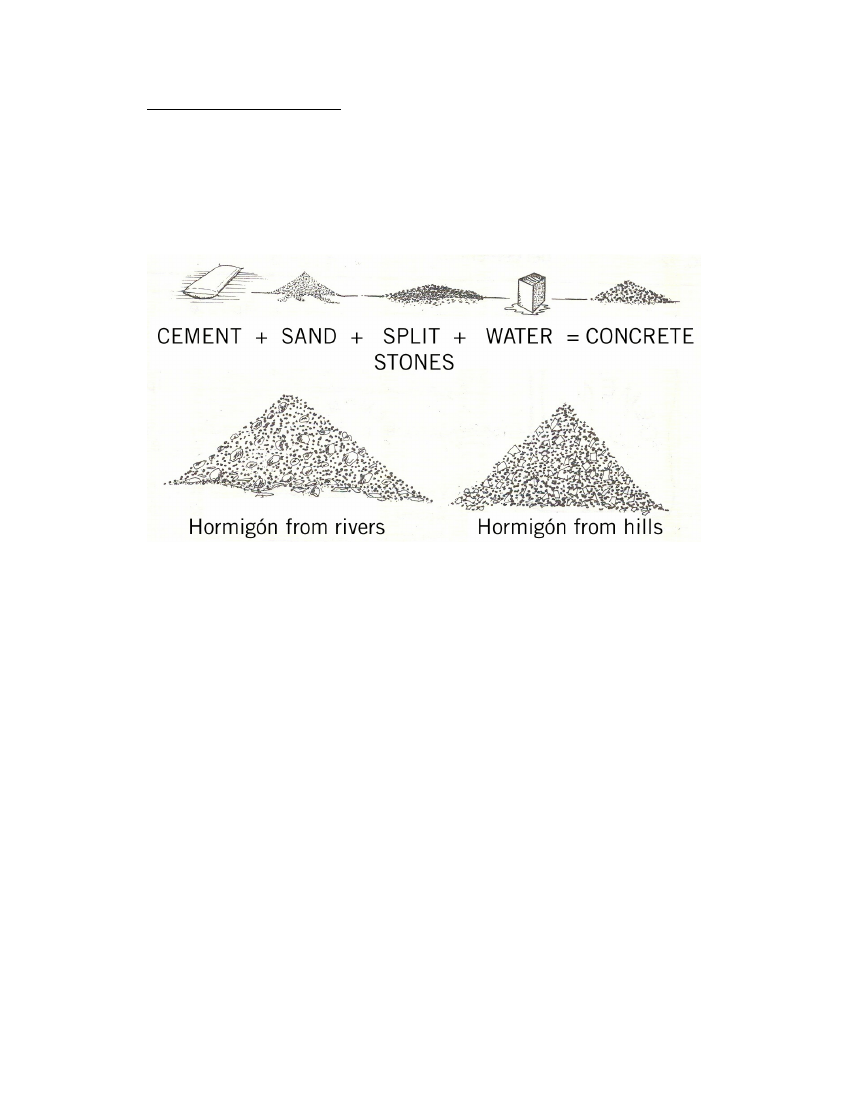
Dosage of concrete mixes
Concrete is a mixture of cement, aggregates and water.
Examples of aggregates are ‘hormigón’, sand, stones, and slag from furnaces.
‘Hormigón’ is a mixture of stones and natural sand found in quarries. Stones
from river quarries are round and stones from hill quarries are angular. The
sand may be thick or fine and both kinds of stones are of variable sizes.
HORMIGÓN = SAND + STONE
Fig. 21
To obtain the right concrete mix – and thus the desired type and resilience of
concrete -, it is important to blend the correct proportions of aggregates
(cement, sand and water).
There are two methods of doing this: 1) by weight, and 2) by volume, of the
concrete components. In both cases the aggregates should be free of organic
matter and have the recommended or specified hardness and size. The water
must be clean, fresh and free of organic matter, salts, acids, etc. The cement
must be fresh and in good condition.
The most advisable way to prepare the mix is by weight, as it is economical and
the results are good. However, your dosage plant must have large-capacity
scales, mixers, transport equipment, cement silos and aggregates classified by
diameters.
Preparing the mix by volume is a reasonable alternative to weighing, whereby
the weight of each component is converted to volume based on volumetric
weights of the aggregates and the cement.
22